Posts Tagged: Throwback Thursday
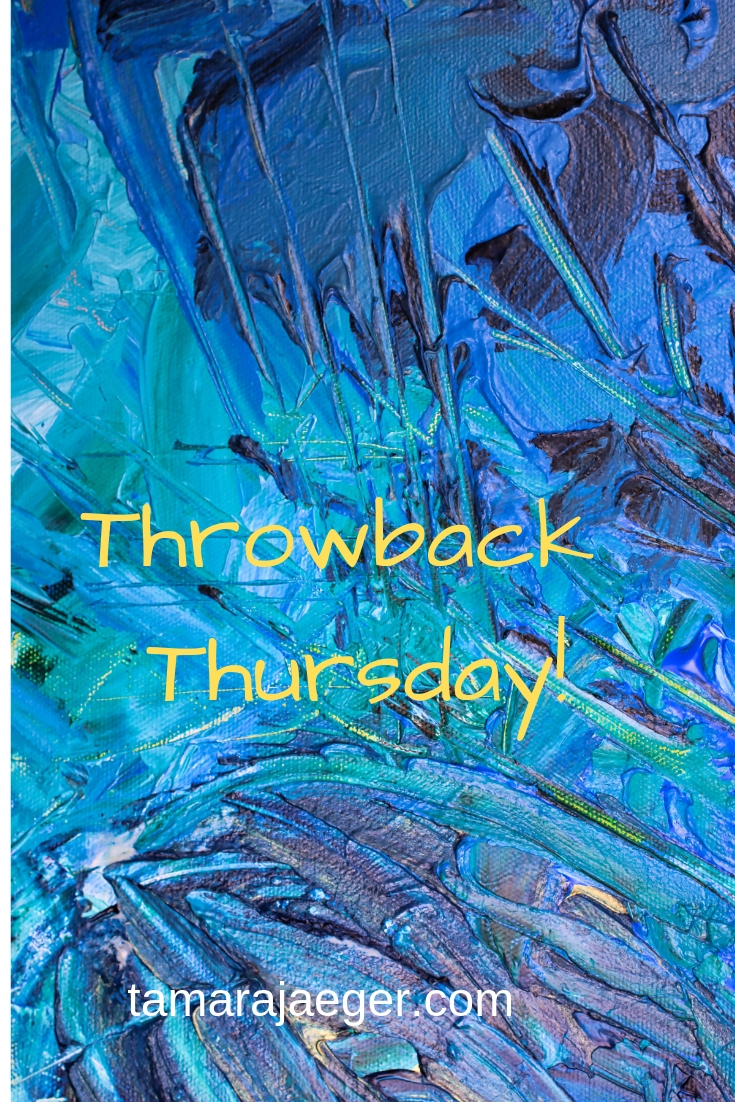

Throw Back Thursday: “Emmie” custom pet portrait
This is “Emmie” and it’s one of my earlier custom pet portraits. I actually know Emmie personally and she’s an absolute sweetheart. I do a fair number of dog portraits. They’re easier to get good photos of than cats, certainly. And I always work from photos with my pet portraits. For one, it’s difficult to get an animal to pose for any length of time! Also, it allows me to create portraits of animals I’ve never met, though I do like to be able to get a feel for the personality of the animal.
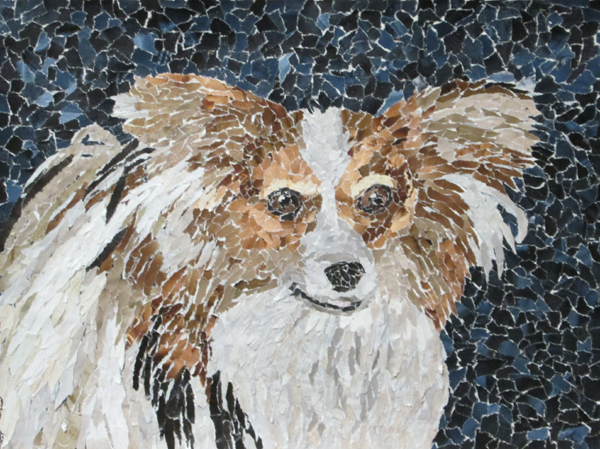
My style has changed slightly since I created “Emmie,” becoming even more realistic-looking, with finer detail. But even in these earlier pieces, capturing the personality of animal is just as important as rendering the physical likeness. Some pieces are more successful at that than others, and yes, I’ve had to completely start over on occasion when something just wasn’t working right. Fortunately, that’s not something that happens too often—there’s a lot that can be done to ‘rescue’ a piece before it gets to that point. In a collage, you can always add a layer on top of what is already there!
Have you noticed your style changing over time? Is it subtle or a dramatic difference?
Are you interested in getting a custom portrait made of your pet? Contact me by email or fill out the request form here for more information. I’d be delighted to help!


Throw Back Thursday: Wading Bird ceramic sculpture
This was one of my favorite pieces from back in college, titled “Wading Bird.” It was actually not intended to be a specific type of bird, more of a general water bird. I tended to work more with texture than color in my ceramic pieces and frequently used the raw, unglazed clay as a design element. In this piece, the ‘rock’ that the bird is sitting on is unglazed. I liked the contrast between the matte surface of the unglazed parts and the glossy, glazed surfaces.
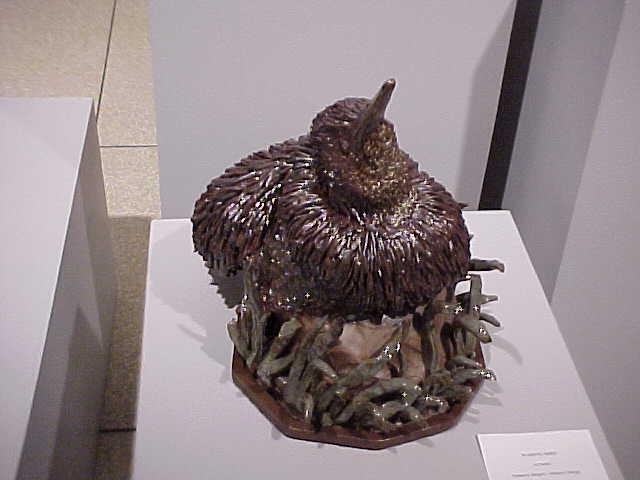
I worked primarily in high-fired stoneware, which was fired to cone 10 (about 2400°F). An important part of the firing process was the two points where the air had to be restricted during firing to produce a reduction rather than oxidation environment, called ‘body reduction’ and ‘glaze reduction.’ Glaze reduction occurs near the end of the firing and affects the colors of certain glazes. Body reduction happens much earlier, and at a much lower temperature, than glaze reduction. If you miss either one of those stages, your pieces don’t turn out looking like you expected.
Most of the other students didn’t really care about body reduction, since their pieces were fully glazed. Mostly wheel-thrown vessels like mugs and bowls. If the body reduction was missed or the firing was uneven, well, it was only the bottom of the piece that was really affected. But for me, the color of the clay body was incredibly important!
We had several gas fired kilns at my university but only one of them consistently fired evenly throughout the kiln and could be relied on to give a nice, even body reduction. Of course, that was the largest kiln that was difficult to get enough pieces to fill completely. As a side note, a tightly-packed, evenly-loaded kiln is important to get an even firing. I tried to fire in that large kiln whenever possible. The beginning ceramics class was doing a firing? I’d be there, begging to try and squeeze my pieces in.
Often though, I had to fire in one of the smaller kilns. It was a decent kiln, don’t get me wrong, and much easier to load and fire than the large one, but it was brutally hard to get that thing to fire evenly. I have any number of pieces where the body reduction wasn’t good, resulting in some pretty ugly, patchy looking pieces. The clay I used turned a nice, rich brown when fired in a reducing environment but was a hideous putty gray in oxidation.
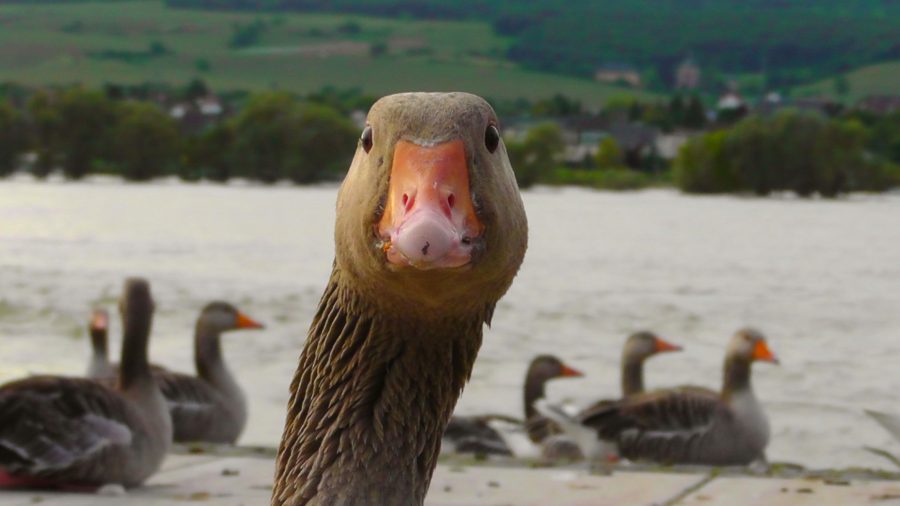
Wading Bird, however, was one of the pieces that turned out great! Did you have any techniques or equipment that are temperamental? Have you ever had any unexpected results? Where they bad or perhaps surprisingly good?


Throw Back Thursday: “Sailing the Stormy Seas of Dream” Ceramic Sculpture
I had a dream back when I was in college. It was one of those strange, somewhat creepy dreams that you can’t really make any sense afterward. But there was this one image that stayed with me, of a strange puffer fish. I really didn’t remember anything else about the dream. Just the fish and the creepy feeling.
So, like a good artist, I promptly took that image and worked it into my artwork! In this case, It took the form of a ceramic sculpture titled “Sailing the Stormy Seas of Dream.”
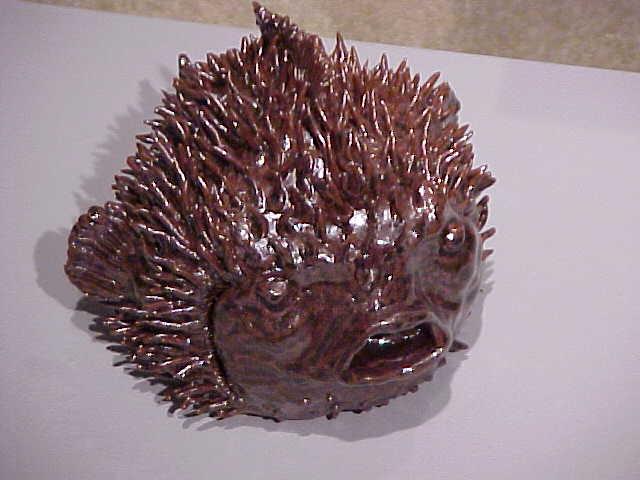
I used many tiny pieces of clay to form the spines and other details—that was a common construction method for my hand built ceramic pieces. I typically used and additive process where I worked with very wet clay and used numerous tiny pieces to build up the overall sculpture. It’s actually very similar to the way I make my torn paper collages, but more three-dimensional.
In ceramics, I took all the rules and threw them out the window. Leather hard clay? Slip and score? Nah! I worked with wet, sloppy clay and just worked the pieces together really well. Structural support was always a bit of a challenge, since the clay was so wet. I used a lot of crumpled newspaper inside the pieces for support, but even that had its challenges. If the paper gets too wet, it can’t support the weight of the wet clay.
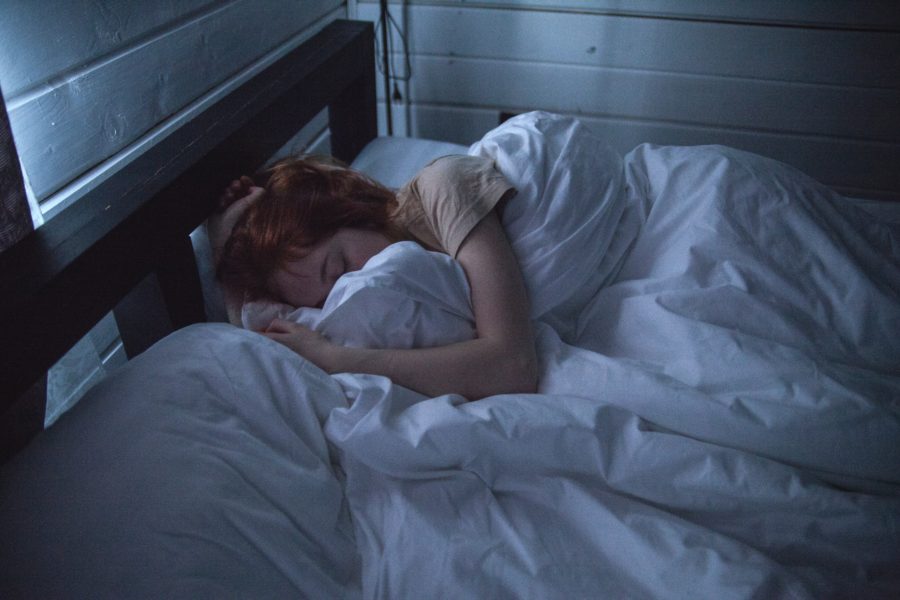
The ‘rules’ also say you need air holes inside hollow or thick pieces. That’s another rule I learned to disregard. However, thorough drying of the piece prior to firing is critical. My bisque firings were long and slow, to make sure all the water was driven off before increasing the temperature above 200 °F. And you know what? I never had a piece explode!
So don’t be afraid to push the limits of your medium. By all means, first learn the rules. And then see what happens when you break them. It may not work. Sometimes you’ll fail spectacularly. But you will always learn something from the attempt.
Are there any art ‘rules’ you’ve broken? What was the result? What ‘rules’ do you find hinder your creative expression the most?